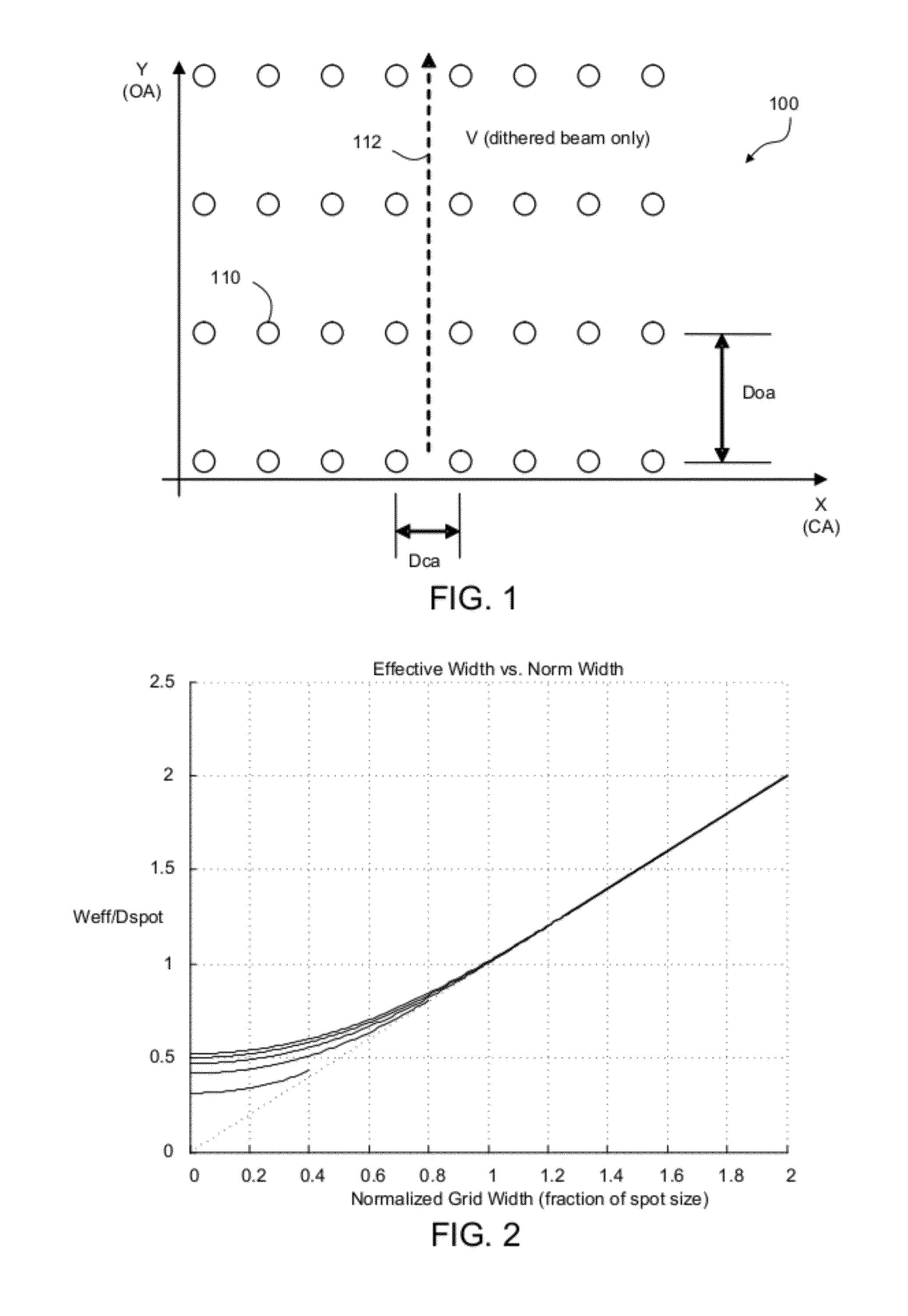Laser processing systems and methods for beam dithering and skiving
a laser processing and beam technology, applied in the field of laser processing, can solve the problems of reducing the processing time affecting the processing efficiency of laser processing machines, and requiring high beam position acceleration, so as to reduce the amount of processing time and variable width of the trench
- Summary
- Abstract
- Description
- Claims
- Application Information
AI Technical Summary
Benefits of technology
Problems solved by technology
Method used
Image
Examples
Embodiment Construction
[0072]The disclosure contained herein describes implementation details for an LDA system using acousto-optic deflectors (AODs) as a beam positioning device. While the example embodiments disclosed herein are directed to AODs, electro-optic deflectors (EODs) may also be used. In certain embodiments, for example, EODs are suitable replacements for some or all AOD pointing (deflection) functions.
[0073]In certain embodiments, the geometry of processed features (e.g., width and depth) may be specified at a high level by the user, and then translated into process commands by machine control software. Laser power and details of the dithering operation are automated in certain embodiments to prevent a burdensome, error-prone manual machine setup process. For example, a user may be provided a simple process to create geometric features with nominal dimensions. The features may include trenches with a target width and depth, or pads with a target diameter and depth. The user may directly ente...
PUM
| Property | Measurement | Unit |
|---|---|---|
| speed | aaaaa | aaaaa |
| time delays | aaaaa | aaaaa |
| velocities | aaaaa | aaaaa |
Abstract
Description
Claims
Application Information
 Login to View More
Login to View More - R&D
- Intellectual Property
- Life Sciences
- Materials
- Tech Scout
- Unparalleled Data Quality
- Higher Quality Content
- 60% Fewer Hallucinations
Browse by: Latest US Patents, China's latest patents, Technical Efficacy Thesaurus, Application Domain, Technology Topic, Popular Technical Reports.
© 2025 PatSnap. All rights reserved.Legal|Privacy policy|Modern Slavery Act Transparency Statement|Sitemap|About US| Contact US: help@patsnap.com



